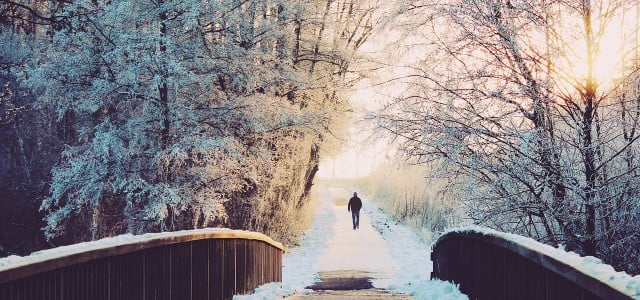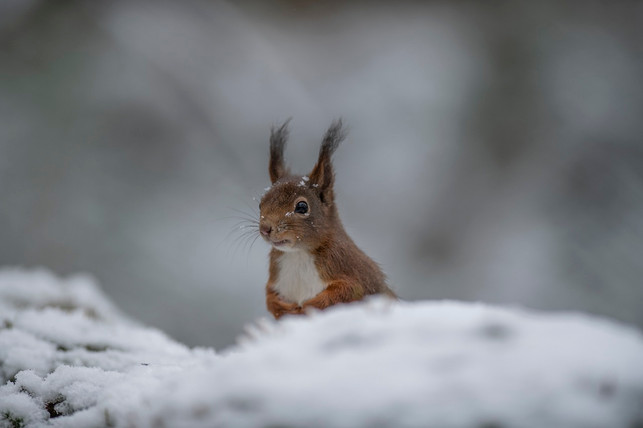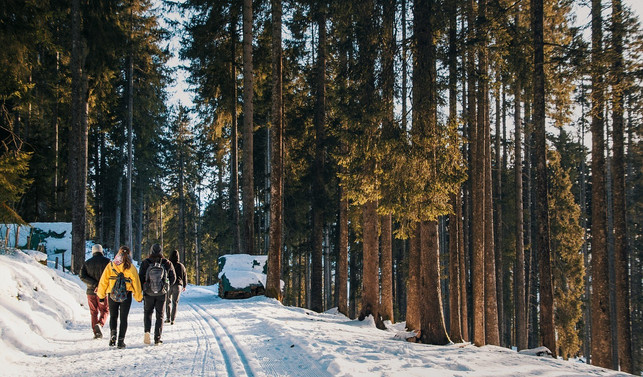
Winter walks are healthy, relaxing and show you the flora and fauna from a new perspective. Here you will get three ideas and other tips for a wonderful time in nature.
Winter walks are ideal for enjoying the cold season. Whether you are traveling alone, with your family or with friends, a winter walk refreshes your body and mind. White snow landscapes offer a unique environment to take a break from everyday life.
Brightness is a rare commodity in winter, so you should make the most of it and spend your time outdoors. Dress warmly enough and be respectful of the still nature on your walk, even in winter. Due to the variety of landscape forms, you discover new things with every walk.
You should pay attention to this when taking winter walks
When you go on your winter walks in nature, it is important that you move mindfully. Some animals hibernate in secret and must not be disturbed. However, there are also winter-active animals that you should only observe from a distance. If possible, stick to the following rules:
- Don’t make noise.
- Only take what you need and don’t leave any trash behind.
- Stay on the marked paths and do not take shortcuts.
- Stay away from wild animals and plants.
Leave the place as you found it and try to consciously enjoy your winter walks. This means you will discover new details with every walk and gain valuable experience.
1. Discover the flora and fauna on winter walks

(Photo: CC0 / Pixabay / barbabs)
Even though it often seems as if nature stands still in winter, forests and other natural environments are still full of animals and plants. You can look for them on your winter walks. Especially if you are traveling with children, looking for animals and growing plants that are active in winter can add excitement to the walk.
These animals, for example, are winter active in the forest:
- Squirrel
- Foxes
- Wild boars
- Deer
- Owls
In addition to the animals, there are also plants to discover. Conifers are evergreen and therefore also bear their needles in winter. According to the Nabu, there are many other plants that bloom in winter. These include, for example:
- Winter snowball
- Hazel bush
- Winter jasmine
- snowdrop
Tip: If you have good knowledge of mushrooms, you can also collect mushrooms in winter:
In Germany you will also find beautiful winter hiking trails on lakes, rivers or by the sea. Depending on where you are, you may see different types of animals such as:
- Ducks, geese and swans
- Kingfishers
- Muskrats and weasels
- Gray heron
- Little Grebe
- Seagulls by the sea
It is often quiet near bodies of water and you can relax particularly well from the fast pace of everyday life. According to psychiatrist Natasha Bijlani, the higher oxygen content of fresh sea air promotes sleep. In addition, the sound of waves can have a very calming effect on the brain. This helps to clear your head, reduce stress levels and strengthen the immune system.
2. Combine winter walks with forest bathing

(Photo: CC0 / Pixabay / Sonyuser)
Walking regularly is healthy and can help you live longer, increase your well-being and prevent illnesses such as depression and dementia. Winter walks in the forest have a particularly beneficial effect.
Try the Japanese natural therapy of forest bathing against the backdrop of snow-covered trees. It’s about consciously enjoying and feeling the forest. The method is straightforward:
- For example, sit on a bench (bring a waterproof seat pad in case it rains or snows) and take time to smell, hear and feel nature.
- You can, for example, establish physical contact with a tree: feel its bark and consciously look at the branches of the leafless treetop.
- Try to walk slowly. Incorporate breathing exercises.
3. Winter walks in cities

(Photo: CC0 / Pixabay / LeifLinding)
Winter walks through the city center are particularly worthwhile during the Christmas season. The cities are mostly lit up and there are Christmas markets where you can warm up with a punch. If possible, choose a non-alcoholic option, as mulled wine to warm up is not a good idea.
In every city you will discover beautiful places or sights that, unlike in summer, are not overcrowded in winter and without you having to spend any money. Many cities have ornate churches, town halls, landmarks, or high viewpoints that you can visit. From there you can, for example, enjoy an impressive view of the snow-covered surroundings.
Since there is so much to offer in cities, you can design your winter walk individually or just spontaneously see what you discover. In many cities there are also interesting city tours in winter where you can learn more.
Winter walks: equipment

(Photo: CC0 / Pixabay / lukasbieri)
In cold weather, you need winter clothing to avoid hypothermia. Protect your upper body in particular from the cold, as that is where your vital organs are located. Good winter equipment includes:
- a winter jacket
- Hat, scarf and gloves
- waterproof winter shoes
- Thermal underwear
Stick to the principle of the onion look, which insulates particularly well without making you sweat. Because if necessary, you can simply take off a layer of clothing. More about this here: Less freezing: These simple tricks help
Are you still looking for suitable clothing for your winter walks? In other articles you will find tips for sustainable outdoor clothing and brands that offer sustainable thermal clothing.
Read more on Techzle\.com:
- Hiking sustainably: 5 tips for harmony between people and nature
- Fasting hiking: It really is that healthy
- Long-distance hiking trails in Germany: hikes in the south, north, east and west
** marked with ** or orange underlined Links to sources of supply are partly partner links: If you buy here, you are actively supporting Techzle\.com, because we then receive a small part of the sales proceeds. More info.